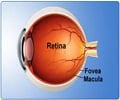The breakthrough treatment tested by British researchers increases hopes of a cure for blindness, especially caused by genetic mutations.

‘Gene therapy may be a potential cure for common vision loss and genetic-related visual impairments in people.’





The gene therapy was applied to six patients suffering from choroideremia, which is caused by a defect in the gene CHM and affects about one in 50,000 people in the UK. There is currently no cure for this disease and as the disease progresses, it damages the retinal photoreceptors. Gene therapy involves the process of using the infectious properties of a virus to insert DNA into a cell, where the viral DNA is replaced with DNA that is reprogrammed to correct whichever gene is faulty in the patient.
The patients were directly injected a harmless virus containing the healthy CHM gene in the retinal cells. After closely following them for four years they found the following results,
- Two patients had an improvement in their eyesight which lasted for four years
- Three patients retained their vision and had no gradual loss
- One patient who was given lower dose of the gene experienced a decline in their eyesight
Lead Investigator of the Study, Robert MacLaren, said, “In this case, success in getting a treatment effect that lasts at least several years was achieved because the viral DNA had an optimal design and the viral vector was delivered into the correct place, using advanced surgical techniques. In brief, this is the breakthrough we have all been waiting for.”
Source-Medindia










